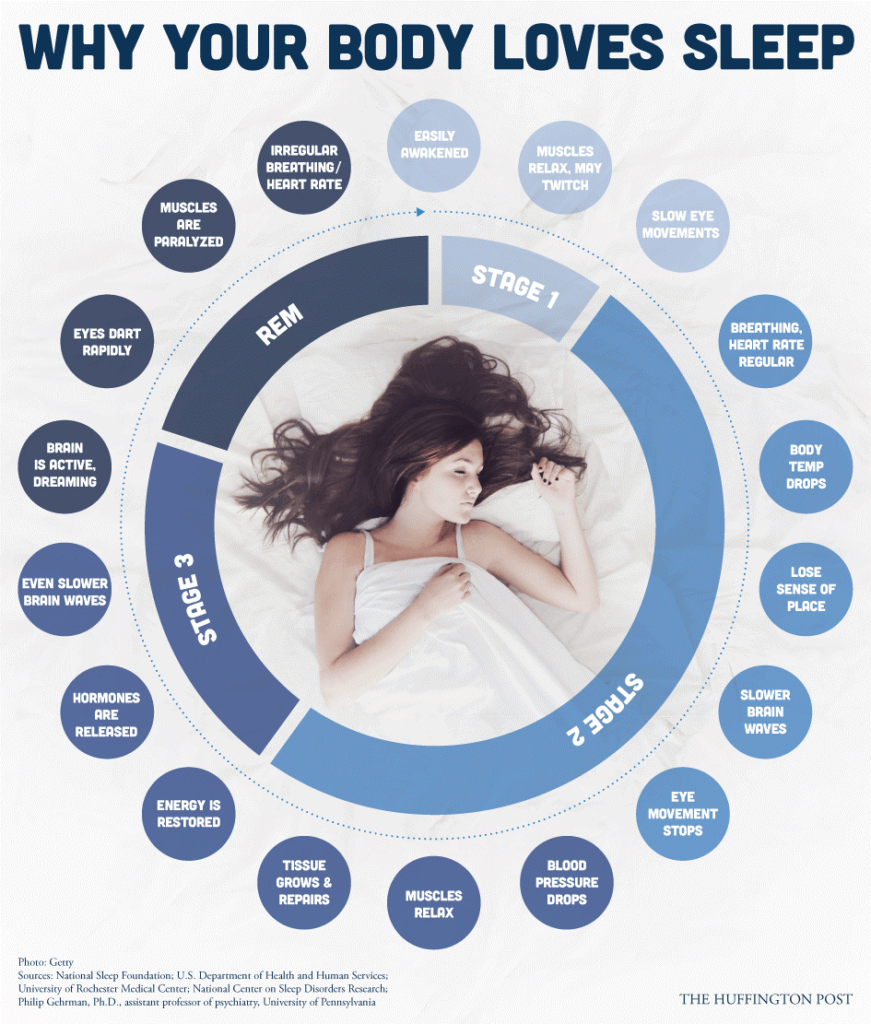
Relying on Crash Diets: Determined to lose 10 pounds fast, you turn to a crash diet. Perhaps your plan calls for nothing but grapefruit or cabbage soup each day. You slash your daily calories to fewer than 1,000, and sure enough, the pounds melt away. But when you eat so few calories, you train your metabolism to slow down. Once the diet is over, you have a body that burns calories more slowly, and you usually regain the weight.
Skipping Breakfast: Skipping breakfast seems like a simple way to cut calories, but it can make you hungry the rest of the day. This may lead to unplanned snacking at work and eating a supersized portion at lunch, making calorie counts soar. But breakfasts that are high in protein and fiber can curb hunger throughout the day. In fact, studies show people who eat breakfast every morning are more likely to maintain a healthy weight.
Losing Track of Your Snacks: Maybe you count calories at every meal, but what about all those nibbles in between? There is the bag of pretzels at your desk, the little slice of cake at a party, the taste of your son’s ice cream cone. All of this mindless munching adds up and could sabotage an otherwise well-planned diet.
Not Snacking at All: While mindless snacking can pad your waistline, thoughtful snacking may do just the opposite. People who eat several small meals and snacks a day are more likely to control hunger and lose weight. Snacking helps keep your metabolism in high gear, especially if the snacks are protein-rich. Having a few nuts is a good, high-protein choice, and research suggests people who snack on nuts tend to be slimmer than those who do not.
Loading Up on Low-Fat: Low-fat products can play an important role in your diet. Just remember that low-fat is not the same as low-calorie, and it is not a license to take second and third helpings. If you pile your plate with low-fat cake, you may end up eating more calories than if you had a smaller slice of regular cake. The best way to know how much fat, sugar, and calories you’re getting is to check the nutritional label.

Sipping Too Many Calories: When counting calories, many of us tend to overlook what is in our drinks. This is a big mistake when you consider that some fancy coffees and alcoholic beverages have more than 500 calories. Even the calories in fruit juice and soda can add up quickly. What is worse is that liquid calories do not curb hunger. You are not going to eat any less after a high-calorie drink.
Drinking Too Little Water: This is one of the simplest diet blunders to fix. Water is essential for burning calories. If you let yourself get dehydrated, your metabolism drags, and that means slower weight loss. Research suggests adults who drink eight or more glasses of water per day burn more calories than those who drink less. So try adding a glass of water to every meal and snack.
Ditching Dairy: Full-fat milk, cheese, and ice cream are taboo for many dieters, but ditching dairy foods may be counterproductive. Some research suggests the body burns more fat when it gets enough calcium and produces more fat when it is calcium-deprived. Calcium supplements do not appear to yield the same benefits, so dairy may have other things going for it, too. Stick to nonfat or low-fat dairy options.
Taking the Drive-Thru Bait: The drive-thru is convenient after a hectic day, and you can always order the salad or other healthier option. But once you are there, can you resist that milkshake or other treat? And if you allow yourself the ease of fast food once, it could become a habit. According to one long-term study, people who ate fast food more than twice a week gained 10 more pounds than those who had it less than once a week.
Weighing Yourself Every Day: Weighing yourself daily is a recipe for frustration and does not yield useful information. It’s more important to look for a long-term trend with weekly weigh-ins. If your goal is to lose 1 or 2 pounds a week, you will be satisfied to see those full-pound drops when you step on the scale. The result is more motivating than the confusing swings that may accompany daily weigh-ins.

Setting Unrealistic Goals: Telling yourself you will lose 20 pounds your first week is probably setting yourself up for failure. If you know you will not be able to do it, you may never start your diet in the first place. If you diet and lose 5 pounds in a week, instead of celebrating, you may feel discouraged that you did not reach your goal.
Drinking Ice Cold Drinks. Iced drinks reduce stomach acid temperature thus reducing the speed of the chemical reactions that breakdown food into molecules small enough to be absorbed. The higher the stomachs temperature, the faster and more efficient the chemical reactions occur. Most chemical reactions proceed at a faster rate as temperature increases. Food digestion reactions follow this general principle, but there is an upper temperature limit of about 40°C or 104°F, lower limit is about 10°C or 50°F. Ice is frozen water, which freezes at 0°C or 32°F, below the minimum for digestion. The inefficient breakdown of foods causes heartburn and indigestion, stomach upset, diarrhea, constipation, malabsorption of nutrients, and damage to the bacterial flora of the intestines.
Think about what you can add to your diet, not what you should take away. Start by focusing on getting the recommended 5-9 servings of fruits and vegetables each day. It sounds like a lot, but it is well worth it, because at the same time you are meeting your fiber goals and feeling more satisfied from the volume of food. You are also less likely to overeat because fruits and vegetables displace fat in the diet. And that is not to mention the health benefits of fruits and vegetables.
Consider whether you’re really hungry. Whenever you feel like eating, look for physical signs of hunger. Hunger is your body’s way of telling you that you need fuel, so when a craving does not come from hunger, eating will never satisfy it. When you are done eating, you should feel better – not stuffed, bloated, or tired. Your stomach is only the size of your fist, so it takes just a handful of food to fill it comfortably. Keeping your portions reasonable will help you get more in touch with your feelings of hunger and fullness.
Enjoy your favorite foods. Putting your favorite foods off limits leads to weight gain because it triggers ‘rebound’ overeating. Instead of cutting out your favorite foods altogether, be a slim shopper. Buy one fresh bakery cookie instead of a box, or a small portion of candy from the bulk bins instead of a whole bag. You can enjoy your favorite foods, but you must do so in moderation.

Enjoy your treats away from home. When you need a treat take a walk to your local ice cream parlor or plan a family outing. By making it into an adventure, you do not have to worry about the temptation of having treats in the house, and it is a fun and pleasurable way to make it work when you are trying to lose weight. And for those times you just cannot get out? Stock the kitchen with fresh fruit, which can be every bit as delicious as any other dessert.
Eat several mini-meals during the day. If you eat fewer calories than you burn, you will lose weight. But when you’re hungry all the time, eating fewer calories can be challenging. Studies show people who eat 4-5 meals or snacks per day are better able to control their appetite and weight. Divide your daily calories into smaller meals or snacks and enjoying as many of them as you can early in the day – dinner should be the last time you eat.
Eat protein at every meal. Protein is more satisfying than carbohydrates or fats, and thus may be the new secret weapon in weight control. Diets higher in protein and moderate in carbs, along with a lifestyle of regular exercise, have an excellent potential to help weight loss. Getting enough protein helps preserve muscle mass and encourages fat burning while keeping you feeling full. So be sure to include healthy protein sources, like yogurt, cheese, nuts, or beans, at meals and snacks.
Spice it up. Add spices or chilies to your food for a flavor boost that can help you feel satisfied. Food that is loaded with flavor will stimulate your taste buds and be more satisfying so you will not eat as much. When you need something sweet, suck on a red-hot fireball candy for a long-lasting burst of sweetness with just a few calories.
Stock your kitchen with healthy convenience foods. Having ready-to-eat snacks and meals-in-minutes staples on hand sets you up for success. You will be less likely to hit the drive-through or call in a pizza order if you can make a healthy meal in 5 or 10 minutes.
- microwave popcorn
- Frozen vegetables
- Bags of pre-washed greens
- Canned diced tomatoes
- Canned beans
- Whole-grain wraps or pitas
- Pre-cooked grilled chicken breasts
- containers of pre-cooked brown rice

Order children’s portions at restaurants. When you are eating out, order a child’s pizza or a small sandwich as an easy way to trim calories and get your portions under control. Another trick is to use smaller plates. This helps the portions look like more, and if your mind is satisfied, your stomach likely will be, too.
Eat foods in season. When you eat seasonally, fruits and vegetables are more flavorful, at their best, and you will not be disappointed.
Swap a cup of pasta for a cup of vegetables. Simply by eating less pasta or bread and more veggies, you could lose a dress or pants size in a year. You can save from 100-200 calories if you reduce the portion of starch on your plate and increase the amount of vegetables.
Use non-food alternatives to cope with stress. Sooner or later, you are going to be faced with a stressful situation. Instead of turning to food for comfort, be prepared with some non-food tactics that work for you. Reading a few chapters in a novel, listening to music, writing in a journal, practicing meditative deep breathing, or looking at a photo album of loved ones can help you feel calm without filling your stomach.
Be physically active. Although it may seem counterintuitive, do not use exercise either to punish yourself for eating or to “earn” the right to eat more. When you do, it sets up a negative thought pattern, which is why so many people say they hate to exercise. Instead, focus on how great you feel, how much better you sleep and how much more energy you have when you exercise. Physical activity is good for you whether you are trying to lose weight or not, so keep it positive and build a lifelong habit.




















